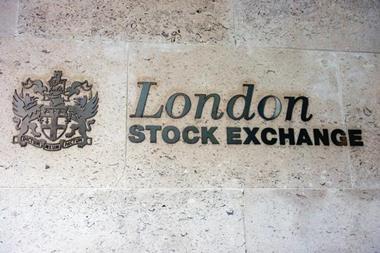Forget the high street or the classifieds, the best bargain out there is Britain’s No 3 insurer, which has had its price slashed to £3bn. Yet it still hasn’t been sold. Ellen Bennett reports
Isn’t anyone tempted by the bargain of the year? The UK’s third largest insurer, owner of some of the biggest brands in the business, could be yours for a knock-down price. That’s right, Direct Line, Churchill, NIG and more are available for a sum believed to be in the region of £3bn to £4bn. Eight months after the auction started, the asking price has tumbled from £7bn, yet there is only one serious contender left.
This is great news for the eventual buyer of Royal Bank of Scotland Insurance (RBSI) – widely expected to be the private equity group CVC Capital, which is thought to be in exclusive negotiations – but a big upset for the market. And just last week it was reported that CVC’s partner, Swiss Re, has pulled out of the race. A combination of bad timing, economic turmoil and changing consumer habits have pushed down the price of a massive business and had the bank almost scrabbling around for a buyer following its part-nationalisation.
There will be no announcements until February, the bank said last week, extending the uncertainty that has crippled the business for months – and helped to drive down the price. One analyst reckons it would now be worth somewhere in the £3bn bracket – half the sum RBS wanted in April.
The bank created its insurance group in 2003 by buying and then merging Direct Line and Churchill, which had strong presences in the motor and home arenas respectively. It also took possession of broker-only insurer NIG, part of Churchill Group, and arguably an odd fit with the rest of the business.
The bank, then run by chief executive Sir Fred Goodwin – known as “Fred the Shred” for his cost-cutting prowess – was already a massive presence in personal and commercial banking and wanted to extend that reach to other financial services. Bancassurance was in vogue at the time and RBS did not want to be left behind.
Fast forward to 2008, when the bank became one of the first financial institutions to run into trouble as the global economy stalled. It was vulnerable because of its ill-timed takeover of the investment banking arm of Dutch bank ABN Amro in spring 2007, which had followed a costly bidding war with Barclays.
In April the bank announced a £5bn write-down of its assets and a £12bn rights issue. At the same time, to appease shareholders, it agreed to sell some of its valuable assets to concentrate on banking. As well as the leasing business Angel Trains, which was sold to a consortium headed by Babcock & Brown for £3.6bn in June, its insurance division went on the market. ‘
‘ It should have been the sale of the century. But RBS acted rather strangely. Rather than put out a straightforward information memorandum and ask any interested party to come forward, it attached strings to the deal to stop any highly leveraged bid – effectively ruling out private equity bidders.
The bank also put a massive price tag on the business. While merger and acquisition consultants valued the insurance business at £4bn to £5bn, RBS wanted £6bn to £7bn.
What was the bank up to? The cynical school of thought is that Goodwin did not actually want to sell, but had to be seen to be looking for a buyer.
One consultant who looked over the books thinks the answer is more simple, however. “They thought people would be queuing up to buy it,” he says. “And perhaps if they had sold off the business in chunks, they would have been.”
At first, there were a number of names in the ring. AIG, Zurich, Allianz, Generali, Allstate and Berkshire Hathaway were all talked about as potential buyers.
For a few weeks, it looked as though RBSI would be the story of the year, with the entire market focused on the sale. The idea was that a big personal lines player, or a business such as Allstate looking to break into the UK market, would buy Direct Line and Churchill, while NIG would be hived off to a composite or commercial lines operator looking to build its presence in the small and medium-sized enterprise market – say, RSA.
But that didn’t happen. The bidders who saw the books began to ask how much the business was really worth. Direct Line had undisputed brand power, but there were whispers in the market that its business model, which focused heavily on telephone motor sales, was looking outdated.
Direct Line’s success was built on advertising heavily to win customers, who would stay with the brand for three-and-a half to four years on average, renewing each year without quibbling over price. But according to market sources, the dawn of the aggregator age has created more fickle clients who are more likely to try to cut costs at each renewal, slashing the average lifetime of a Direct Line customer to two years.
An RBSI spokesman says: “It is the growth in usage of the internet as a channel, rather than the growth of aggregators per se, that is changing the way insurers do business, and the Direct Line model is well-placed for the future. Direct Line uses the internet and phone so customers can contact us through their channel of choice.”
However, the head of commercial at one insurer says: “It just wasn’t worth what they were asking.” His company was initially linked to a deal, but he was fazed by this aspect of the book. “We wouldn’t have touched it at that price.”
NIG in particular was seen as a difficult business, sitting uncomfortably with the direct providers and needing expert attention.
Then in May, the general economy nosedived and it became clear that AIG was not going to buy anything: the world’s largest insurer posted a $7.8bn (£5.2bn) loss for the first quarter, including a $5.9bn pre-tax write-down.
Within weeks, other potential buyers including Berkshire Hathaway, Generali and Ping An had ruled themselves out. Perhaps they were reading the signs of the economy, or perhaps the bank’s public insistence on achieving full value had put them off.
“Nobody had the capital,” says one source. “Which insurer was going to lay out that kind of money at that time?”
Soon there were only two bidders left – Zurich and Allstate. In July, as RBS set out a timetable for serious expressions of interest, Zurich revealed that it too was bowing out.
Suddenly the sale began to look less likely, with one analyst predicting it would fall through altogether.
All this uncertainty did little to help the business. In October, the commercial boss Andy Cornish left for AIG.
An RBSI spokesman says of his departure: “It continues to be business as usual despite Andy’s decision to leave. We have already appointed Nigel Pearce to cover Andy’s position on an interim basis. They have been working closely together to ensure a smooth transition.”
As the global economy went into freefall, the sale of one business seemed less important. But the eyes of the financial community turned back to RBS when it had to be bailed out in October.
The bank was handed £20bn by the UK government, which now owns a 58% stake and has £15bn of preference shares. The preference shares are driving down the value of the business, so it is in the shareholders’ interests to pay them back as soon as possible.
With cash scarce and other insurers looking to get their own houses in order, a trade purchase is now extremely unlikely. Re-enter private equity, with a report in The Sunday Times in October that CVC Capital was eyeing up the firm, with Swiss Re involved in the deal in some capacity.
CVC and Swiss Re have remained tight-lipped, and neither would contribute to this piece. However, it has been reported that Swiss Re has pulled out of the deal.
Stephen Hester, the bank’s new chief executive, has said: “We’re still in discussions with a number of counterparties about either a whole or a partial sale; those counterparties are still doing their due diligence and evaluations and, at this stage, no deal has been concluded.”
If the bank does not have a realistic offer on the table by the annual general meeting in February, chances are it won’t sell – but it will be looking to make the deal to free itself from the government’s grip. For CVC, if the price is anything close to £3bn, it will be worth the wait.


































